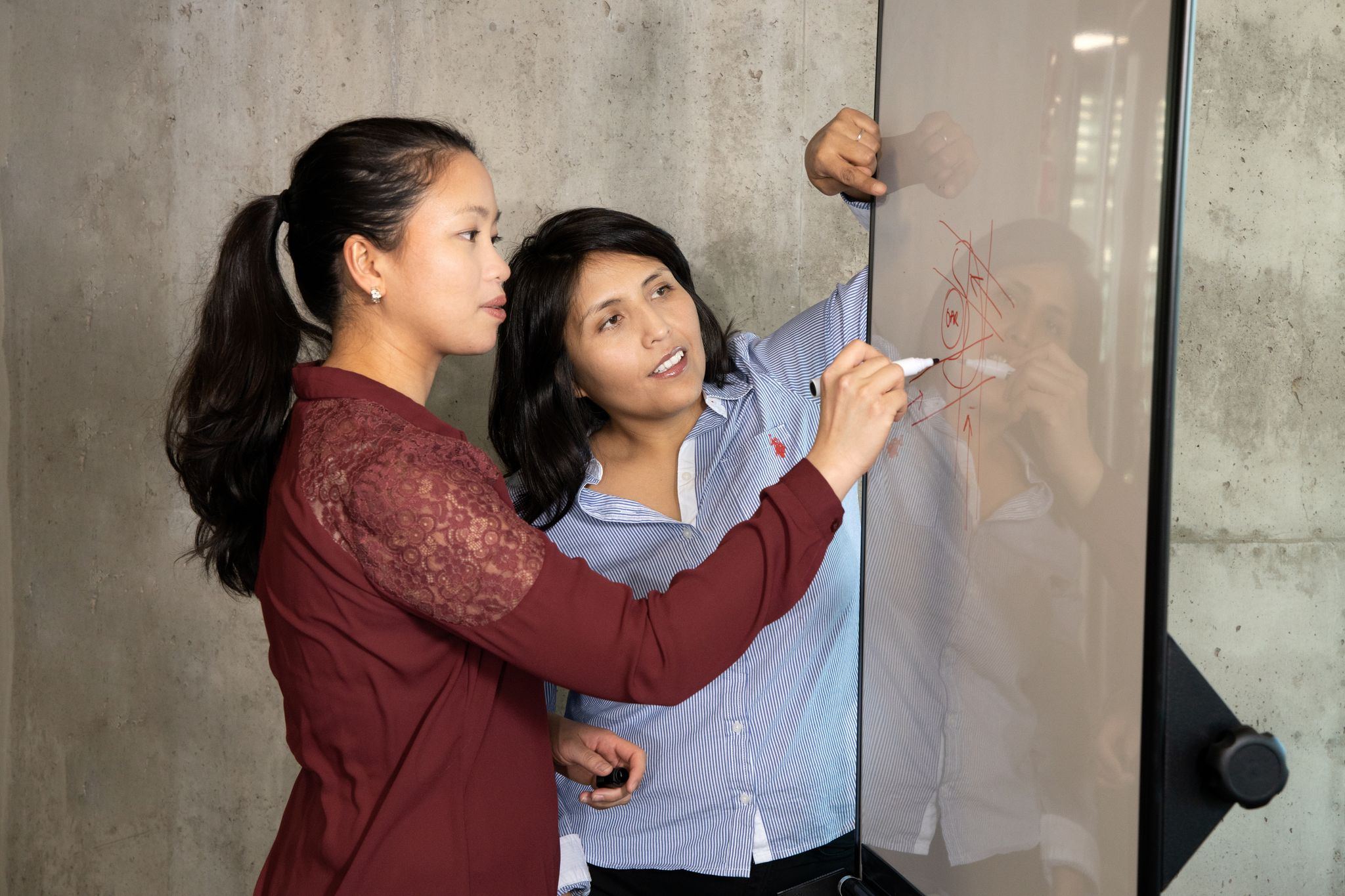How to make healthcare accessibility a reality worldwide? (linkki suomenkieliseen blogiin)
Contemplating the outbreak of the COVID-19 pandemic worldwide along with the lack of healthcare resources, equipment, and staff in developing countries makes me reflect on the differences in access to healthcare in each country. I am grateful to live in Finland where everyone has access to healthcare, but at the same time it troubles me knowing that this is not everyone's reality. I believe that each individual has the right to receive education and healthcare access.
The potential of AI
One of the key elements to achieve global healthcare access is to develop high-end, automated, smart medical devices that are low-cost. These cutting-edge technologies should be developed to automate healthcare as much as possible. For example, artificial intelligence (AI) emulating human cognition could be implemented for prediction, diagnosis and treatment.
AI-based decisions are a direct reflection of the input data; therefore, in order to effectively deploy AI in healthcare, making massive amounts of data available is required. These data points are needed to identify various patterns using AI, which in turn enable the development of novel methods for disease prediction, diagnosis, treatment, and overall healthcare improvements. To achieve this, there is the need to standardize data collection and ensure patients are aware that data is vital to improving health, personalized medicine, treatment outcomes, care and services. Artificial intelligence plays a key role in medical technology but often requires sufficient data for prediction model training to be effectively incorporated in healthcare innovation.
While standardized hospital practices continuously generate mountains of patient data required for training AI applications, these resources are often of a proprietary nature that restricts open access to the technology sector. Accordingly, future innovations aiming to apply applications of AI towards medical breakthroughs would benefit greatly from the generation of freely accessible repositories of data made available through patient consent. However, establishing such a valuable resource is likely to be an insurmountable task so long as patient data can be sold to the highest bidder in accordance with laws established by the respective government body.

Using remote assistance
In addition to applying AI for healthcare innovation, improving the efficacy of global healthcare also needs improved access to experienced medical professionals. Therefore, providing telemedicine access for remote healthcare services is another critically important part of the solution. For example, the COVID-19 social distancing policy has demonstrated that telemedicine services are viable by forcing an increasing demand for access to care via outlets such as virtual communications, remote expert reviews, and home monitoring, among others.
Continuing to invest in technology
Improving worldwide healthcare access is a challenge that requires multi-faceted solutions, and the aforementioned topics serve as examples of how technological innovation may contribute to solving this problem. I am thankful to be working in the medical technology field because it allows me to contribute towards the development of new technologies that aim to deliver safe and effective healthcare devices worldwide.
Tamara Pozzo, Verification and Validation Manager at Varian Medical Systems

Miten terveydenhuollon saavutettavuudesta saadaan todellisuutta maailmanlaajuisesti?
Maailmanlaajuisen koronaviruspandemian puhkeaminen sekä kehitysmaiden terveydenhuollon resurssien, laitteiden ja henkilöstön puute sai minut pohtimaan terveydenhuollon saavutettavuuden eroja eri maissa. Olen kiitollinen siitä, että saan asua Suomessa, jossa kaikilla on pääsy terveydenhuollon piiriin. Samalla minua kuitenkin vaivaa tieto siitä, että tämä ei ole kaikille maailmassa todellisuutta. Uskon, että jokaisella yksilöllä on oikeus koulutukseen ja terveydenhuoltoon.
Tekoälyn mahdollisuudet
Yksi tärkeimmistä tekijöistä terveydenhuollon saavutettavuuden edistämisessä on kehittää huippuluokan automatisoituja, älykkäitä ja edullisia lääkinnällisiä laitteita. Huipputeknologioita on kehitettävä, jotta terveydenhuollosta voidaan automatisoida mahdollisimman suuri osa. Esimerkiksi ihmisen ymmärrystä jäljittelevä tekoäly voitaisiin valjastaa sairauksien ennustamiseen, diagnosointiin ja hoitoon.
Tekoälypohjaiset ratkaisut perustuvat dataan. Jotta tekoälyä voidaan tehokkaasti alkaa hyödyntää terveydenhuollossa, tarvitaan dataa valtavia määriä. Tekoäly tunnistaa suurista tietomassoista kaavoja, joiden pohjalta on mahdollista kehittää uusia menetelmiä sairauksien ennustamiseen, diagnosointiin, hoitoon sekä terveydenhuollon parantamiseen yleisesti. Tämän saavuttamiseksi on tiedonkeruu standardisoitava ja varmistettava, että myös potilaat ymmärtävät tiedonkeruun merkityksen terveyden, yksilöllisen hoidon, hoitotulosten ja palvelujen parantamisessa. Tekoälyllä on keskeinen rooli lääketieteellisen teknologian kehityksessä, mutta tekoälyn opettaminen ja ennustemallinnusten tehokas hyödyntäminen terveydenhuollossa vaatii jatkuvaa datan keruuta.
Terveydenhuollossa tuotetaan jatkuvasti suuria määriä tekoälysovellusten kehittämiseen tarvittavia tietoja. Nämä tietovarannot ovat kuitenkin usein suljettuja, mikä rajoittaa tiedon vapaata hyödyntämistä teknologia-alalla. Tekoälypohjaiset lääketieteelliset läpimurrot hyötyisivät suuresti potilaiden suostumuksella vapaasti saatavilla olevasta datasta. Tällaisen arvokkaan, avoimen dataresurssin perustaminen vaikuttaa kuitenkin ylitsepääsemättömältä niin kauan kuin lainsäädäntö eri maissa tarjoaa yksinoikeuden tietovarantoihin ainoastaan eniten maksavalle toimijalle.
Etäpalveluiden käyttö
Tekoälyn kehittämisen ohella globaalin terveydenhuollon saavutettavuus edellyttää myös pääsyn helpottamista lääketieteen ammattilaisten vastaanotoille. Siksi etähoidon ja etälaitteiden tarjoaminen on toinen ratkaisevan tärkeä osa kokonaisuutta. Lähikontaktien vähentäminen koronapandemian aikana on jo osoittanut, että terveydenhuollon etäpalvelut ovat toteuttamiskelpoisia ja hoidon saavutettavuutta voidaan globaalilla tasolla parantaa muun muassa virtuaaliviestinnän, etäarviointien ja kotiseurannan avulla.
Teknologiainvestointien jatkaminen
Terveydenhuollon saavutettavuuden parantaminen on globaali haaste ja se edellyttää monimuotoisia ratkaisuja. Edellä mainitut aiheet ovat hyviä esimerkkejä siitä, miten teknologiset innovaatiot voivat auttaa tämän ongelman selättämisessä. Olen iloinen siitä, että työskentelen lääketieteellisen teknologian alalla. Työssäni saan osallistua uusien teknologioiden kehittämiseen, joilla pyritään tarjoamaan turvallisia ja tehokkaita terveydenhuoltolaitteita maailmanlaajuisesti.
Tamara Pozzo, Verification and Validation Manager, Varian Medical Systems